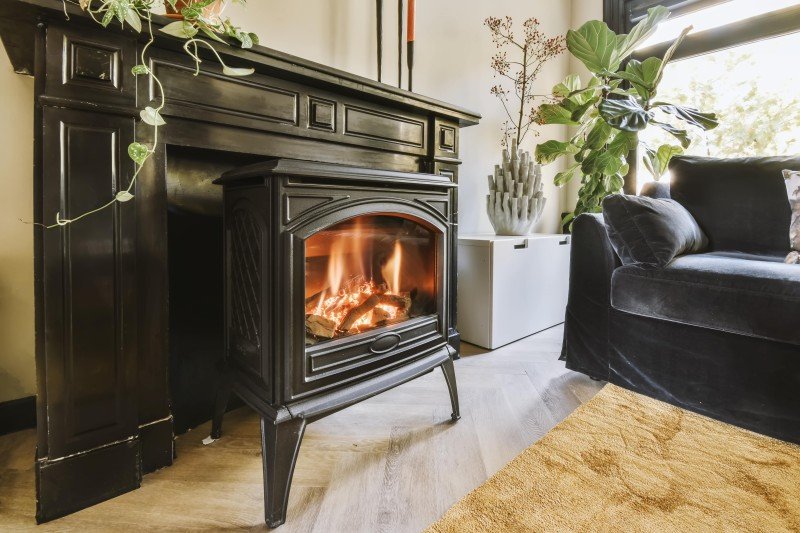Best Value Fireplaces: An In-Depth Guide
The fireplace has actually long been considered the heart of a home, supplying heat, ambiance, and a focal point for social events. However, navigating through numerous choices can be frustrating, specifically with budget restrictions in mind. Fireplaces Online presents a useful guide on the very best value fireplaces, detailing their types, features, and advantages to help homeowners make a smart option.
Types of Fireplaces
Fireplaces can be found in a range of styles and types, each with various attributes, expenses, and advantages. Here's an in-depth appearance at the most typical types of fireplaces readily available in the market today.
| Type of Fireplace | Description | Average Cost | Pros | Cons |
|---|---|---|---|---|
| Wood-Burning | Burn logs to develop heat and atmosphere. | ₤ 1,500 - ₤ 5,000 | Genuine experience, natural heat | Needs regular upkeep, less efficient |
| Gas Fireplaces | Utilizes natural gas or lp to produce heat. | ₤ 2,000 - ₤ 5,000 | Easy to use, cleaner than wood | Limited to gas supply, setup expenses |
| Electric Fireplaces | Replicates flames with LED innovation and produces heat by means of electrical power. | ₤ 200 - ₤ 3,000 | Easy setup, installation flexibility | Less genuine feel, greater operating expense |
| Pellet Stoves | Use compressed wood or biomass pellets, supplying an environment-friendly alternative. | ₤ 3,000 - ₤ 4,500 | Efficient, low emissions | Needs electrical power to operate, needs storage for pellets |
| Ethanol Fireplaces | Burns ethanol fuel, producing flames that do not need a chimney. | ₤ 300 - ₤ 2,500 | No vents needed, portable | Higher fuel cost, security concerns |
Aspects to Consider When Choosing a Fireplace
Picking the right fireplace is not almost aesthetics; it likewise involves practical factors to consider. Here are crucial factors to keep in mind:
1. Budget
- Identify how much you want to spend. Keep in mind that installation and upkeep expenses can build up.
2. Area and Size
- Guarantee the fireplace fits well within the space, considering both the space readily available and the heating requirements.
3. Fuel Type
- Choose the fuel source based upon accessibility, cost, and the kind of ambiance you want to accomplish.
4. Efficiency
- Choose systems with high-efficiency ratings to ensure you are getting the most value for your money in regards to heat output.
5. Visual Appeal
- Select a design and design that matches existing design and enhances the general beauty of the space.
6. Regulations
- Be conscious of local guidelines, allows, and structure codes that might affect your fireplace installation.
Top Best Value Fireplaces
Based on customer reviews, professional viewpoints, and overall value for money, here are some of the very best value fireplaces currently readily available in the market:
1. DuraVent Pellet Stove
- Type: Pellet
- Typical Cost: ₤ 2,000
- Emphasizes: Highly efficient with low emissions, making it an outstanding alternative for environmentally-conscious homeowners.
2. Napoleon B36NTR-1
- Type: Gas
- Average Cost: ₤ 2,500
- Highlights: This fireplace is aesthetically attractive and highly efficient, with a smooth design and adjustable flame.
3. Duraflame Electric Heater Stove
- Type: Electric
- Average Cost: ₤ 200
- Emphasizes: Affordable and portable, ideal for smaller sized areas or adding atmosphere to a room without long-term setup.
4. Genuine Flame Juliet Gel Fireplace
- Type: Ethanol
- Average Cost: ₤ 300
- Highlights: An elegant option for modern areas that requires no venting, making it flexible and easy to install.
5. Vogelzang VG5790
- Type: Wood-Burning
- Average Cost: ₤ 800
- Emphasizes: Offers a traditional wood-burning experience with a streamlined modern style, best for those who value the traditional ambiance.
Regularly Asked Questions (FAQs)
Q1: What is the most economical fireplace choice?
A1: Electric fireplaces tend to be the most cost-effective in regards to preliminary purchase price and installation, however can have higher operating expenses compared to gas or pellet units.
Q2: Are gas fireplaces much safer than wood-burning fireplaces?
A2: Yes, gas fireplaces usually produce less emissions and pose a lower threat of chimney fires as they do not produce creosote like wood-burning units.
Q3: Can I install a fireplace myself?
A3: While some electric fireplaces enable simple self-installation, other types, particularly gas and wood-burning designs, typically need expert installation due to venting and security issues.
Q4: How do I keep my fireplace?
A4: Regular upkeep includes cleaning the chimney (for wood-burning fireplaces), examining for gas leakages (in gas units), and ensuring proper ventilation for electric designs.
Q5: Is an ethanol fireplace an excellent option?
A5: Ethanol fireplaces are appealing for their modern style and ease of installation. However, they can be less efficient and more costly to operate long-lasting compared to other fuel types.
Picking a value fireplace that meets your visual choices and useful requirements involves thorough research and consideration. By comprehending different kinds of fireplaces, their associated expenses, and advantages, homeowners can make informed choices that will not only fit their spending plan however also enhance the warm and inviting atmosphere of their homes. Whether opting for an electric, gas, wood-burning, pellet, or ethanol model, the ideal fireplace waits for to change your living area.

